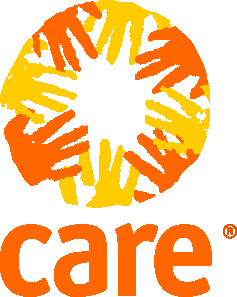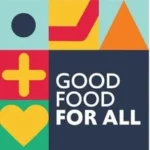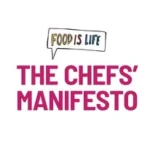07/02/2019
Tonya Rawe
Director of Global Food and Nutrition Security Advocacy, CARE
CARE is a development and humanitarian organisation working to defeat poverty and achieve social justice. We focus particularly on women and girls because we know that we can’t succeed in ending poverty until everyone has equal rights. Last year, we worked in 95 countries and served 56 million people.
Our approach reflects the link between SDG2 and the others, including goals on
gender equality, water, land-based ecosystems, climate change, inequality, and sustainable production and consumption. CARE also emphasises advocacy, recognising that we need to multiply our impact beyond community level by influencing policies at local, national, regional, and global level.
What is your best food memory ?
Any and all memories of food are my favourite — I love food! I also love to cook, so one of my favourite food memories is any time I have a dinner party – planning out a menu, thinking about what dishes go together, what new recipes I want to cook, and then getting to spend an entire day in the kitchen. Cooking, for me, is a big creative outlet and a great way to nourish not only myself but dear friends and family.
What else would you like to share with other Hub members?
As attention grows on the links between food systems, nutrition, and climate change, I’m hopeful the global SDG2 community can come together to call for the ambitious action needed to address these challenges. We each bring different expertise, but now more than ever, we need to work together. As I’m at the climate negotiations for a couple weeks, too, I’m inspired by the passion and perseverance of today’s youth in demanding action to protect their future.
Find out more at www.care.org.
————————————————————–


Joanna Kane-Potaka
Assistant Director General, International Crops Research Institute for the Semi-Arid Tropics (ICRISAT) & Executive Director, Smart Food
Smart Food is food that fulfills ‘all’ criteria of being: good for you; good for the planet; and good for the farmer. It is a solution that contributes to addressing some of the largest global issues and SDGs in unison: poor diets (malnutrition to obesity); environmental issues (climate change, water scarcity and environmental degradation); and rural poverty.
A key objective of the Smart Food initiative is to ‘diversify staples’ across Africa and Asia. By focusing on staples, often 70% of the plate and eaten 3 times a day, this is how we can have a major impact. To achieve this, we need to popularise Smart Food globally to ensure the required investment, R&D, and support. This means driving major new industries – creating large new commodity markets and product value chains. The approach is to build consumer demand, work closely with value chain players, for example the food manufacturing and food service industries, and engage farmers to ensure they benefit appropriately. Advocating for a conducive and supporting environment especially from governments is also important.
How is your work contributing to SDG2?
Since Smart Food solutions must tackle food being good for you, the planet and the farmer in unison, it contributes to all of the components of SDG2 as well as contributing to SDG1 (no poverty), SDG 12 (responsible consumption and production) and SDG 13 (climate action). We believe it is very important to have solutions that cut across the key problems. This is more complex to manage but is essential to ensure we don’t solve on problem and in the process, harm another area. It is important not to work in our silos and to think about the bigger picture and inter-connections. The approach we take in our solutions are based on SGD 5 (gender equality) and SDG 17 (partnerships for the goals).
What is your best food memory?
Until I moved to India nearly seven years ago, I had never heard of millets let alone tasted them. Their nutritional benefits are amazing, like finger millet which has three times the calcium of milk and proso millet which can have nearly three times more iron than red meat. My favourite are some of the minor millets that you can cook just as easy and quick as rice and becomes an amazing super healthy staple. I love millet milkshakes and I even created my own millet icecream recipe. My friends and family all think I have gone a little millet mad!
What else would you like to share with other Hub members?
I am really excited with four studies we just completed in Kenya, Tanzania, Myanmar and India where we showed that when introduced to millets in the right way, people really liked them and we also showed some great health impacts. For example, in the school feeding programme in India, there was a 50% faster growth for the millet based meals compared to those eating iron-fortified rice-based meals. Also, the children rated the meals 4.5 or higher out of 5 for taste, including little millet served as an alternative to rice.
I am also excited with our ambassadors for Smart Food which include the First Lady of Niger and three African chefs based in Paris and London. We also ran a Smart Food reality TV show in Kenya and this year we are releasing a five-part video series of a reality show for student chefs across India. There is much more being rolled out and we plan to have the key information in place for the September UN General Assembly when they will vote on the proposal that FAO has already approved, for 2023 to be the UN International Year of Millets.
Find out more at http://www.smartfood.org.









